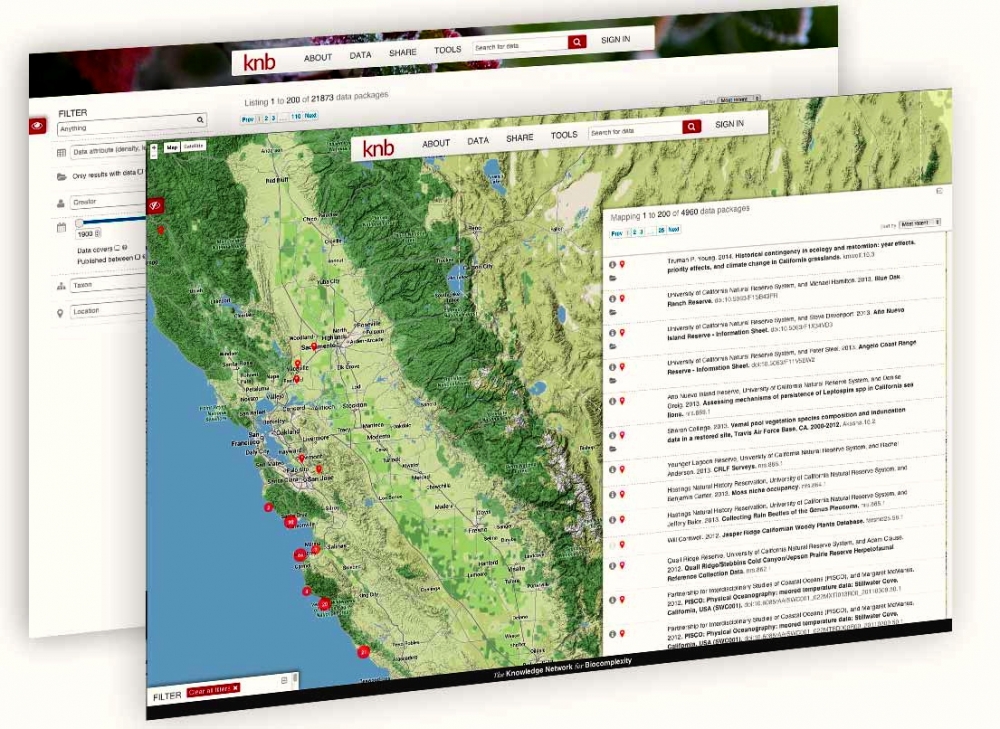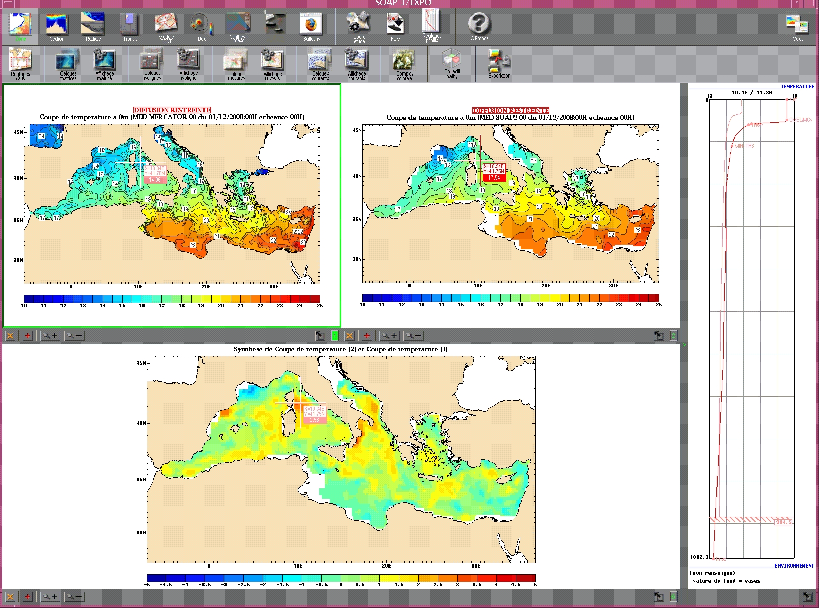1998
Type of resources
Available actions
Topics
Keywords
Contact for the resource
Provided by
Years
Formats
Representation types
Update frequencies
status
Scale
Resolution
-

The Knowledge Network for Biocomplexity (KNB) is an international repository intended to facilitate ecological and environmental research. The KNB was launched in 1998 with a grant from the National Science Foundation (NSF), with the purpose of being the long term home for synthesis datasets and research products generated by National Center for Ecological Analysis and Synthesis (NCEAS) working groups. Since then, NCEAS has continued to operate the KNB not only as an archive for NCEAS working group products, but also for the broader ecology and environmental science community. The KNB acceps all environmental or ecological related data and publishes datasets with Digital Object Identifiers for the express purpose of ensuring long-term access to these datasets. We strive to abide by FAIR (findable, accessible, interoperable, resuble) principles of data sharing and preservation. For scientists, the KNB is an efficient way to share, discover, access and interpret complex ecological data. Due to rich contextual information provided with KNB data, scientists are able to integrate and analyze data with less effort. The data originate from a highly-distributed set of field stations, laboratories, research sites, and individual researchers. The foundation of the KNB is the rich, detailed metadata provided by researchers that collect data, which promotes both automated and manual integration of data into new projects.
-

Acquisition de données topographiques de la plage intertidale du Truc Vert, côte atlantique à environ 20 km de la pointe du Cap Ferret. L'ensemble des données regroupent: -profils crossshore (perpendiculaire à la côte) en 2D réalisé au théodolite, s'étendant de la dune au bas de plage -levés au GPS cinématique en 3D sur 350m longshore par 250m crossshore -relevés au GPS métrique de la ligne de basse mer
-
Nombre de demandeurs d'emploi de catégorie A (à la recherche d'emploi et sans emploi ou en activité réduite) par communes en Aquitaine au 31/12/2010.
-
Points de repère utilisés sur le terrain par l'ONF.
-

Système DUACS d’acquisition, de valorisation et d’information de l’altimétrie
-

Ensemble des espaces réservés à la chasse clôturé ou non sur le département de la Gironde.
-

Ouvrages de franchissement empierrés ou en sol naturel, épousant le profil en travers de fossé ou de cours d'eau. Leur établissement nécessite de ne pas avoir un fossé trop profond ni trop étroit. Les passages à gué empierrés peuvent jouer un rôle de seuil fixant le profil en long et la progression de l'érosion. Ils conviennent aux cours d'eau de faible profondeur, d'ouverture assez large présentant de faibles pentes. Ces données concernent les territoires forestiers des communes du Lot-et-Garonne appartenant à une association syndicale autorisée de Défense des Forêts contre l'Incendie. Date de Publication : 2009
-
Il s'agit d'un suivi des communautés de ciliés et de flagellés planctoniques du Bassin d'Arcachon en terme de diversité taxonomique et d'abondance. Le suivi est réalisé sur 14 stations représentatives des différentes masses d'eau du Bassin.
-

The SOAP system is the baseline for the real-time operational oceanographic forecasting and is the main oceanographic forecasting tool.
-

Subdivisions territoriales du Service Départemental d'Incendie et de Secours de la Gironde. Date de Publication : 2009
 Catalogue PIGMA
Catalogue PIGMA